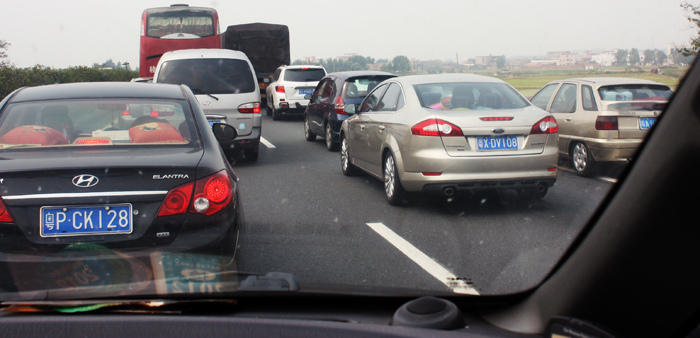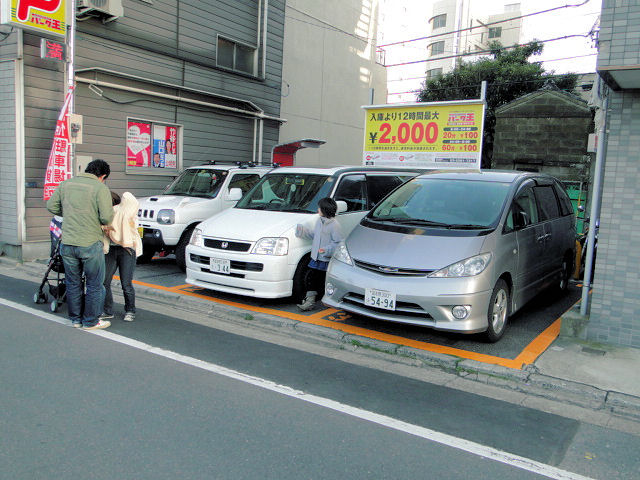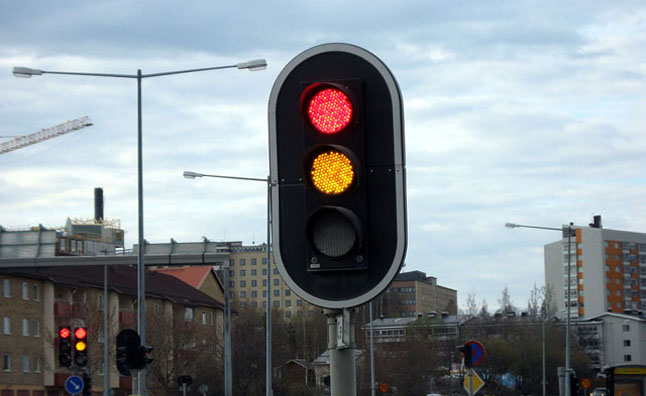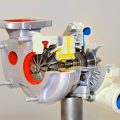China, with a vehicle population of 240 million cars, has a number of geographical, infrastructural, and cultural factors that lead to unique traffic laws. These atypical regulations affect everything from safety to sales.
Limits on Car Sales
To fight the interconnected problems of pollution and overcrowded roads, many regions in China limit the number of cars sold per year. In Shanghai, for instance, hopeful car buyers must take part in a complicated lottery for the chance to purchase a license plate, where the ratio of lottery winners to potential car buyers is 20,000 to 1.53 million, or roughly 1 lottery winner for every 76 potential buyers. Recent auctions have demanded over $14,000 per plate, which is more than many cars cost. More cities plan to implement similar car-limiting measures, but the effectiveness of such policies has been questioned because they don’t actually get cars off the road: they simply choke the supply of new ones.
Unique Test Questions
The written portion of the Chinese driver’s license test contains many tricky questions. They include survival-related questions, like what you should do when your vehicle falls into a body of water, and what you should hold onto if your car tumbles into a ditch. (Answers: smash a window to swim out, and the steering column, respectively.) To pass, participants need a score of 90 out of 100, which understandably takes several tries for many would-be drivers.
Yellow Equals Red?
Chinese stoplights have three colors: Red means stop; yellow means proceed with caution/prepare to stop; and green means go. At least, that’s how it used to work. Per CNN, in 2013 China enacted a new rule that introduced penalties for going through yellow lights. Drivers who run two yellow lights in a year could get their license suspended. With penalties for going through both yellow and red lights, drivers have wondered what the difference between the two is intended to be.
Preferential Treatment
One group of drivers doesn’t have to worry about yellow lights — or any lights for that matter. Drivers of military vehicles — those with white license plates — can essentially ignore traffic laws. Asia Times Online has reported on how many drivers with military plates abuse their privileges. The cars are immune to tolls and parking fees, and can blow through red lights. In fact, these privileges have created a black market for fake military plates. China is reportedly taking steps to halt these abuses.
Pedestrian Chaos
Pedestrians in China have limited protection from traffic. One rule allows cars to turn into pedestrians’ paths when a traffic signal permits. In response, pedestrians in China herd up until they think they have a group large enough to block cars and cross the road “safely.” Many cities have cracked down on this practice by aggressively going after jaywalkers, though such enforcement has not been very effective.
These “solutions”– pedestrians ganging up to plod across roads, with officials trying in vain to stop them — are emblematic of the typical response to China’s peculiar traffic laws. Crowded roads, infrastructural challenges, and still-developing policies all combine to produce some of oddest traffic laws in the world.
Byline
In addition to traffic laws, Morris Metcalf takes an interest in international law, EU law, mesothelioma litigation and other complex issues. To learn more about mesothelioma litigation (such as the ins and outs of mesothelioma settlement and compensation) Morris encourages readers to visit a firm with an established record in this area.
Image credit goes to zhang278.

































No Comments
Leave a comment Cancel